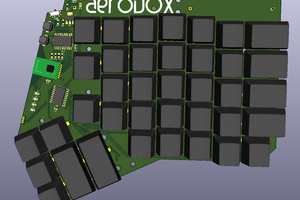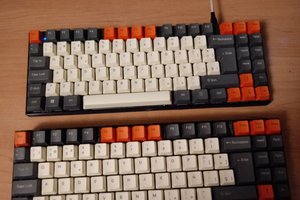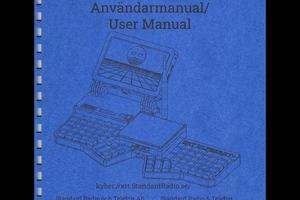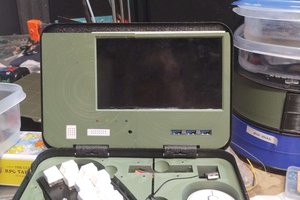Q: Will you lose interest in the project and fizzle out?
A: No. I have an aging X230 to replace and I will never compromise on the TrackPoint, classic keyboard, or easily upgradable parts. These goals can only be achieved with the completion of this project.
Q: When?
A: The closer my X230 comes to obsolescence, the more pressured I will be to work on this.
Phase I: Design the Keyboard
Re-implement the 7-Row ThinkPad Keyboard using Kailh Choc mechanical switches and a microcontroller with QMK
- This is the main attraction, likely the bulkiest component, and can be tested independently of the rest
- Volume, power, and mouse buttons will be tactile keyswitches
- Custom one-off mechanical keyboards, including ones with a TrackPoint, are a proven concept. The PCB will be designed in KiCad.
- Unlike official 7-row keyboards that are no longer produced, this will be easily reproducible
TrackPoint
- Some enthusiasts have been able to group order the TrackPoint part separately. For now, I will harvest the TrackPoint from an existing ThinkPad keyboard.
- The 2-piece TrackPoint module from the ThinkPad T440~T480, P52s, or X240~X270 will be used as it should be easier to fit between the G, H, and B keys
Interface
- Microcontroller will likely be RP2040, in line with that used in the Framework 16 input modules, unless another compelling choice comes up
- Interface over the connector otherwise used for the official Framework keyboard
Phase II: 3D Modelling of Chassis and Fitment Testing (Planned Q4 2025)
- Design and 3D print basic chassis prototypes to test fit, demonstrate function, and locate load-bearing points
- Chassis will be modelled in FreeCAD (especially now that 1.0 has released)
- Due to extra thickness imposed by the keyboard, the usual cable routing will be diverted to a "third hinge" (see the T60)
- As with older ThinkPads, the palmrest area will be raised to be flush with keycaps while the lid "cups" over this raised area
Phase III: Refinement of Chassis and Integration of Additional Components
- Polish up the chassis design for aesthetic appeal and structural integrity
- Interchangeable mainboards from Framework mean that there is no need to redesign and remake everything every two years!
Worklight
- Re-implementation of the ThinkLight
- In fact, two of them because that would look cool
- Avoids the hassle of wiring up a keyboard backlight
Speaker kill switch
- Forgot to mute? Avoid embarrassment instantly and confidently without fumbling around for the keyboard shortcut!
- This will be worked in as an optional cutout
Unresolved Matters
No Trackpad
- You are welcome to fork my designs when I publish them, but I do not use a trackpad and will not be testing such a configuration.
No Ethernet Port or Hardware Wireless Switch
- Both are theoretically possible, but can't think of an elegant arrangement yet.
- I want this to look somewhat neat, so no flying leads or parts dangling off the side.
Future Ideas
Swappable / Extended Batteries
- Despite there being thousands of different laptop batteries, designing a custom BMS that reports capacity back to the host machine seems to be a mysterious and poorly documented process
Metal Parts
- Make it sturdy and premium-feeling
- Likely need to refactor design to account for limitations of aluminum CNC
- This is particularly relevant for the load-bearing hinges
16-inch Variant
- I've vacillated enough already. We'll focus on the 13-inch version for now.
Articulating "butterfly" keyboard
- Now we're really getting ahead of ourselves
- We won't realize the PSREF mockup for at least a few more years
 Kartoffelstolz
Kartoffelstolz
 Simon Merrett
Simon Merrett
 Sergio Costas
Sergio Costas
 Tinfoil_Haberdashery
Tinfoil_Haberdashery
 Patrick Tait
Patrick Tait